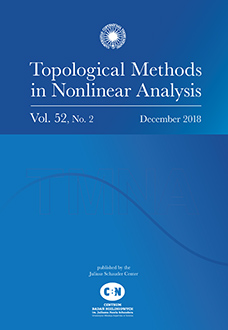Abstract
In the present paper we consider the problem:\begin{equation} \label{0}\tag{N$_\varepsilon$}\begin{cases}-\varepsilon^{2}\Delta u+u=u^{3}+\lambda v& \text{in } \Omega, \\-\varepsilon^{2}\Delta v+v=v^{3}+\lambda u& \text{in } \Omega,\\u> 0,\ v> 0& \text{in } \Omega,\\\dfrac{\partial u}{\partial n}=\dfrac{\partial v}{\partial n}=0& \text{on }\partial\Omega,\end{cases}\end{equation}where $\varepsilon> 0$, $0< \lambda< 1$, $\Omega\subset\mathbb{R}^{3}$ is smooth and bounded, and $n$ denotes the outer normal vector defined on $\partial\Omega$, the boundary of $\Omega$. By the Lyapunov-Schmidt reduction method and the maximum principle of elliptic equations, we construct synchronized solutions of (\ref{0}) with mixed interior and boundary peaks for any $0< \varepsilon< \varepsilon_0$ and $\lambda\in(0,1)\backslash\{\lambda_0\}$, where $\lambda_0\in(0,1)$ is given and $\varepsilon_0> 0$ is sufficiently small. As $\varepsilon$ approaches $0$, the interior peaks concentrate at sphere packing points in $\Omega$ and the boundary peaks concentrate at the critical points of the mean curvature function of the boundary.
Citation
Ke Jin. "Multiple mixed interior and boundary peaks synchronized solutions for linearly coupled Schrödinger systems." Topol. Methods Nonlinear Anal. 62 (2) 693 - 726, 2023. https://doi.org/10.12775/TMNA.2023.020
Information





